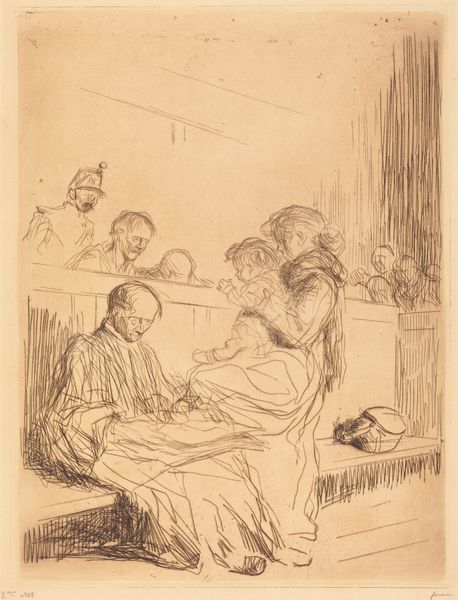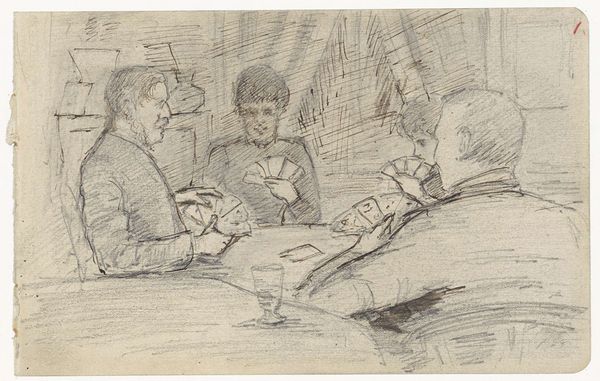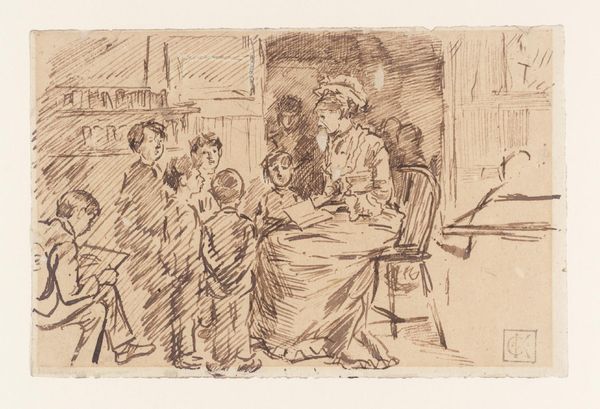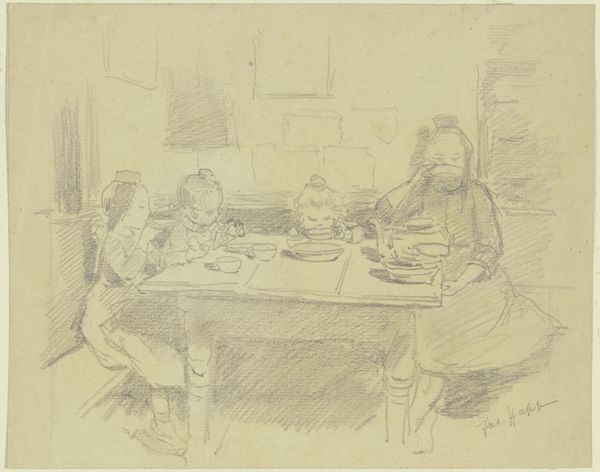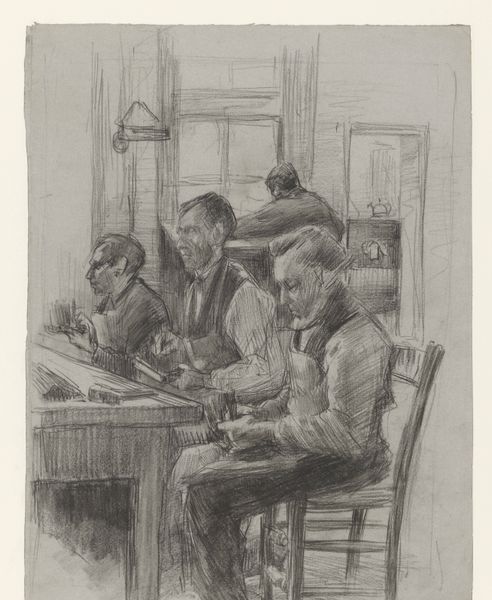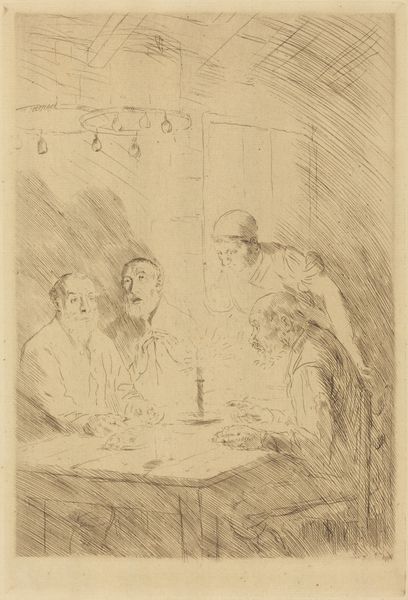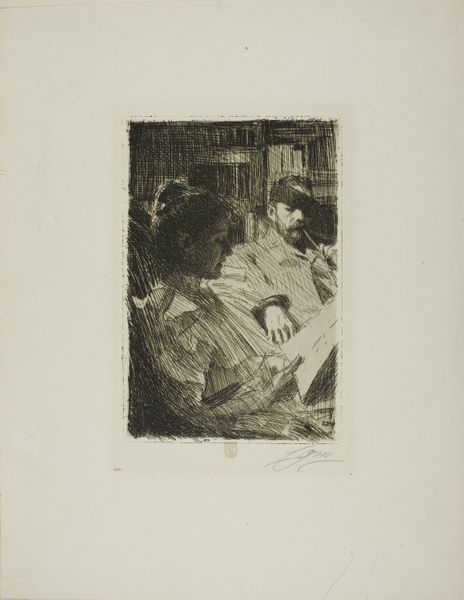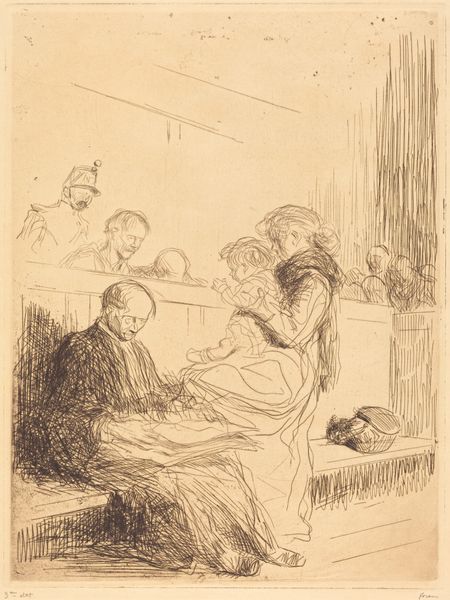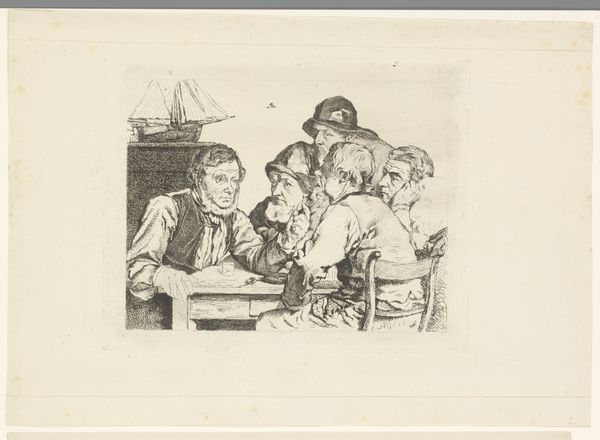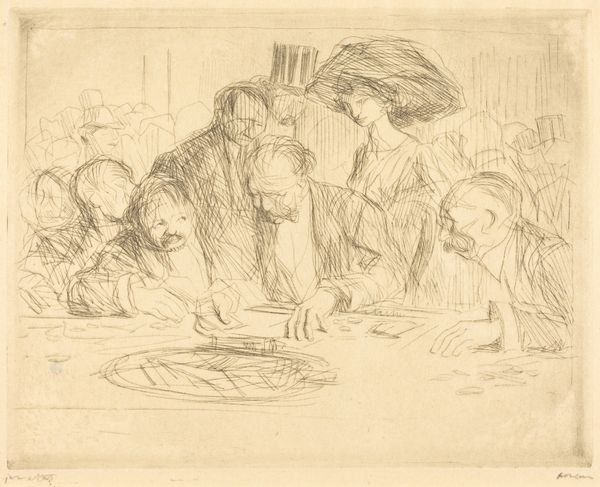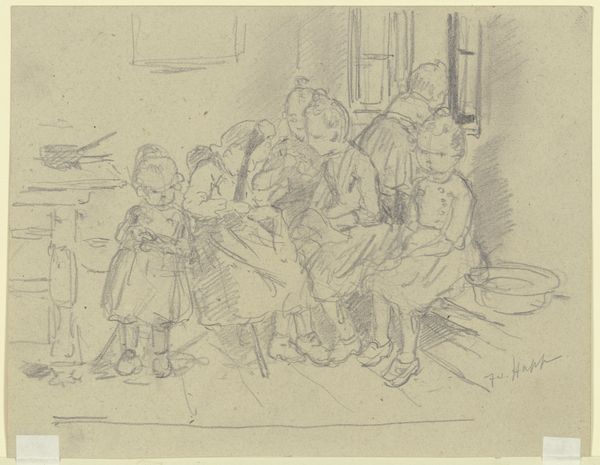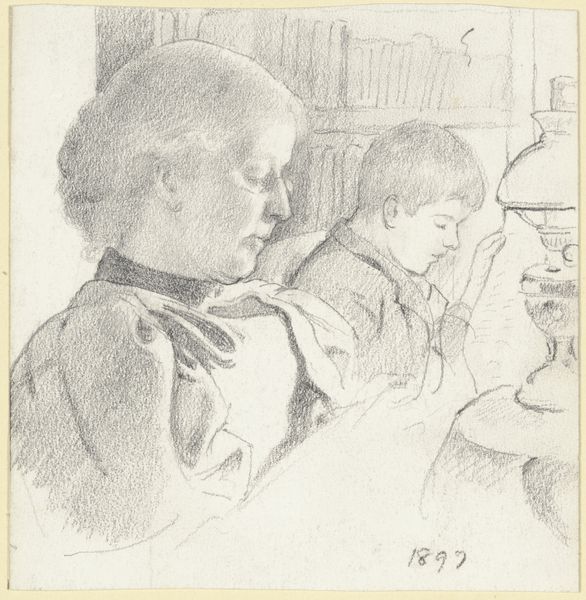
Twee jongens en een meisje die aan tafel een spel spelen 1865 - 1913
0:00
0:00
drawing, paper, pencil
#
portrait
#
drawing
#
amateur sketch
#
table
#
toned paper
#
light pencil work
#
pencil sketch
#
figuration
#
paper
#
personal sketchbook
#
idea generation sketch
#
sketchwork
#
pen-ink sketch
#
pencil
#
sketchbook drawing
#
genre-painting
#
initial sketch
Copyright: Rijks Museum: Open Domain
Editor: Here we have "Twee jongens en een meisje die aan tafel een spel spelen," or "Two Boys and a Girl Playing a Game at a Table," a pencil drawing from sometime between 1865 and 1913. It’s located at the Rijksmuseum, and is attributed to Bramine Hubrecht. It's a pretty rough sketch, unfinished maybe? I am curious how you interpret this piece? Curator: Looking at this drawing through a materialist lens, I’m struck by the accessibility of its production. Pencil on paper, everyday materials employed to capture a fleeting domestic scene. Who had access to these materials and how does the ease of creating drawings impact the role of art in society? Editor: That's an interesting perspective. I guess I hadn't really considered the 'everyday-ness' of it all. So you are saying, because it's 'just' pencil and paper, it changes our perspective of art itself? Curator: Exactly! The nature of the medium invites us to question the conventional hierarchy between 'high art' and the everyday act of mark-making. How readily available were these materials and skills, and whom did they empower? Was the artistic talent taught in the family or elsewhere? Editor: I suppose a painting might give off a different feeling. Is the focus on the 'means of production' key to the materialist perspective? Curator: Precisely. Here, the visible labor is crucial, as you said it feels 'unfinished', every pencil stroke, smudge and line correction is left visible. We get to see the choices, the work put into this very simple but very relatable sketch. The table in the picture, and the marks left on it by the artist; it speaks of the intimate setting and labour undertaken in its production. Editor: This makes me consider the role of art outside galleries, like casual sketching; art we find outside established museums, which broadens how and where to discover art. Curator: And thinking further of how widely these materials, pencil and paper, could disseminate ideas through mass production – something radically new for the late 19th and early 20th centuries! Editor: It seems such simple materials open a gateway into a world of social history! Curator: Precisely! It reminds us of art’s connection to everyday existence and makes you rethink accessibility, labour, and the artistic merit.
Comments
No comments
Be the first to comment and join the conversation on the ultimate creative platform.
